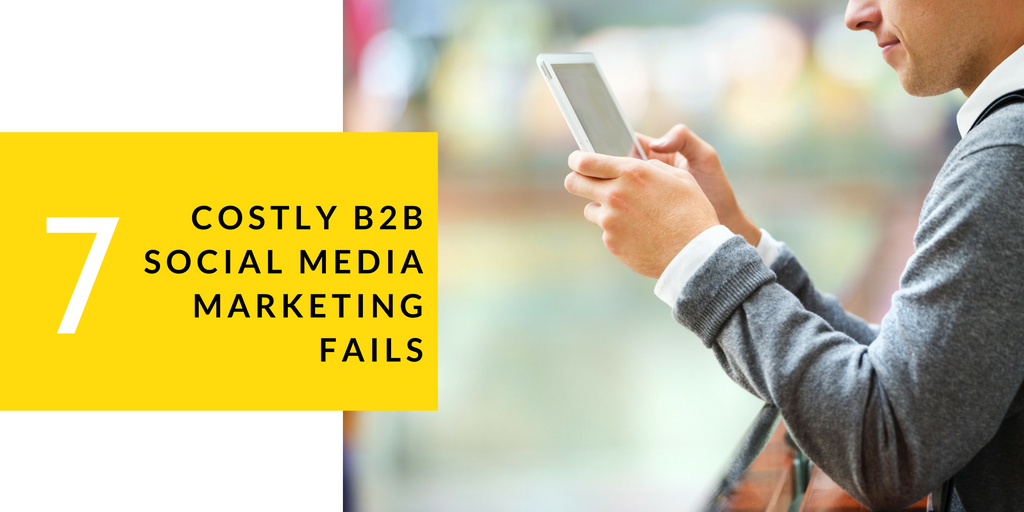 Adam Marquardt
Adam Marquardt
Social media is better at one-on-one--B2C--marketing, right? Wrong. According to marketing gurus Kipp Bodnar and Jeffrey L. Cohen's The B2B Social Media Book, Becoming a Marketing Superstar, B2B companies "area better fit" for B2B for a variety of reasons.
B2B companies tend to have a more focused understanding of their clients. Their depth of subject matter expertise and expert marketing on a budget make social media a great tool for proselytizing clients and nurturing their B2B relationships with followers, who are likely to become loyal clients and promote brand reputation.
 Bodnar and Cohen also point out that long before Twitter and Facebook became the social media magnetic magnates they are today, B2B marketers were out front telling their stories and marketing their content through snail mail and pre-information age approaches--brochures, ad campaigns, etc.
Bodnar and Cohen also point out that long before Twitter and Facebook became the social media magnetic magnates they are today, B2B marketers were out front telling their stories and marketing their content through snail mail and pre-information age approaches--brochures, ad campaigns, etc.
However, successfully using the social media tool requires an understanding of how social media works works and how, unfortunately, it can sometimes fail. Any failed business promotion endeavor can be costly in terms of wasted time, money and resources.
The bottom line is return on investment, both short-term and over the lifetime of the company. The former may take immediate precedence over the latter, but wise inbound marketing is never shortsighted.
Here are seven typical pitfalls that can lead to costly social media marketing failures:
1. Sabotaging ROI by ignoring lead generation possibilities
When it comes to marketing, according to Kipp Bodnar, "B2B social media is about lead generation." Sure, building communities and educating your fan/clients base is a worthy long-term endeavor, but, again, according to Bodnar, "if you don't present lead conversion opportunities, you will never generate the revenue needed to fund your social media marketing efforts." Stray from the ROI path, and social media marketing could end up in your rearview mirror.
Takeaway: The path back to ROI is through providing a way for social media visitors to complete lead conversion forms for follow-ups to convert leads to sales.
2. Failing to measure B2B Social Media ROI
Leads don’t become ROI until they become actual clients. Guessing about how well social media marketing is going, or simply tracking likes and numbers of followers are not the metrics of marketing success.
Takeaway: Analyzing actual user data across a variety of marketing channels requires time and effort. Measuring the ROI for social media marketing will gather the concrete metrics that make social media inbound marketing worth the effort.
3. Ignoring the potential scope and reach of social media marketing for your business
With the bottom line always at the forefront, it is tempting for marketers to concentrate on the high-quality leads with high-average sales. B2B marketers often overlook the exponential phenomenon of social media reach and how B2B marketing content can spread across the Internet.
Takeaway: Do not ignore the potential enormous reach of social media. Inbound marketing on Facebook and other social media accounts like LinkedIn can pay dividends in building a B2B outreach. Read how to do that in this informative piece by Lindsay Kolowich.
4. Failure to dedicate the resources--time and staff--for social media marketing
Yes, most online social media platforms are free, and it is tempting to add them to the marketing mix because they are there. Adopting social media as a dilatory experiment and just letting it all happen will handicap your B2B social media marketing from the outset, virtually guaranteeing failure.
Takeaway: The reality is that social media marketing always requires more time and money than most marketers expect. Figure on spending twice the time and come up with a strategy for diverting efforts from other nonproductive marketing activities.
5. Being sales-y with insufficient focus on the clients
Social media visitors aren't looking for boring product descriptions or product-focused content. It is the marketer's job to hype interest in the product. Using social media to hawk prosaic products misses the mark.
Takeaway: Instead of hawking your wares, publish social media content that specifically relates to your clients' problems and needs and how your product or service solves and fulfills the latter.
6. Using a single or segmented approach, rather than integrating social media marketing
It is a mistake to rely on social media as a replacement for offline marketing. Social media marketing is but one piece of the marketing pie and works best as a part of an integrated inbound marketing strategy.
Takeaway: Look for opportunities to include and integrate social media with traditionally productive marketing programs. For example, add links to your social media in your next direct mail campaign.
7. Forgetting SEO
Last, but never least, the biggest mistake you can make is to forget about search engine optimization. SEO may be joined at the hip to your website outbound marketing, but forgetting that treasure trove of keywords can nullify the web crawler as a powerful tool to elicit followers to your media message.
Takeaway: Break out that unified keyword list and build it into your social media presence. You need to get on the same page and present a united front for your inbound marketing strategy. SEO, coupled with great content, is the key to unlocking your B2B presence on the Internet.
Social media marketing is both an art and a craft. It straddles the fine line between what everyone is looking for in ROI: instant returns, and payback over the life of an organization.
